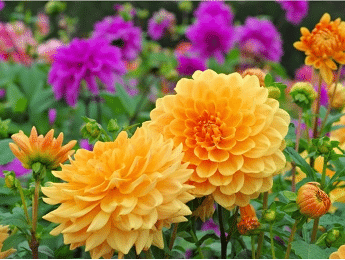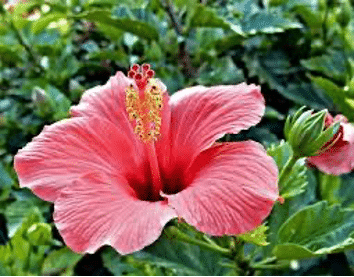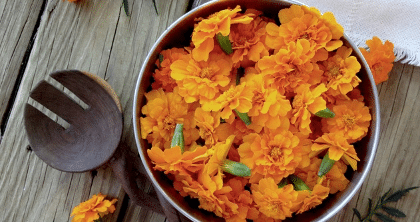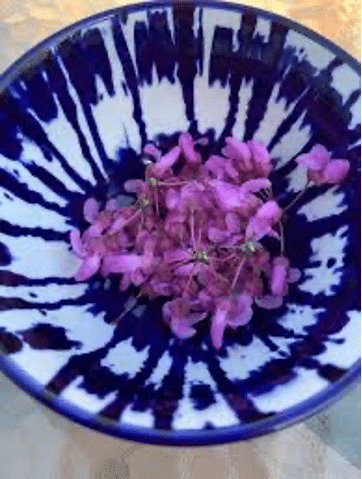Add some spice to your life with edible flowers

You don’t need to be a hardcore forager to find something tasty to add to the menu.
I have always been in awe of brave people. Soldiers, first responders, and teachers, especially. But when my mind veers from its normal thinking path, I am even more amazed by curious explorers. For instance, who was the very first person who yanked an oyster from the sea and said: “After I pry this thing open, I’m going to swallow whatever I find inside”? Or how about medicinal plants? “I think I’ll mash up this weird root I dug up into a paste and smear it on the next open wound I see.”
Whoops! Here I go once more writing a crazy intro rather than just getting to the point. Today’s topic wait for it….) Edible Flowers! For hundreds of years, flowers have been used to both decorate and nourish. Before we jump in I need to drop in this disclaimer: do your own research! Don’t jam any plant into your mouth that you’re unsure of. If it doesn’t come from your garden (where you know the plants haven’t been sprayed with some nasty chemical, don’t eat it. You may also consider only feasting on flowers you’ve grown from seed so you’re not ingesting something funky in an unknown potting mix. There. My roomful of lawyers will be quite pleased. By the way, if you’re looking for a great book on edible flowers, there is a great one you can find by Rosalind Creasy. Just Google her name and Edible Flowers.
Nancy Hughes, co-owner of OWL Bakery in Asheville, NC says “When using edible flowers, you experience flavors ranging from spicy to bitter to floral. Flowers are almost their own version of spices.” If you visit Thomson & Morgan’s website on the subject you will find they list over 100 species as possibilities https://www.thompson-morgan.com/edible-flowers
Since I know everyone is busy these days, I’ve chopped that list down to 12 and here they are:
ANISE HYSSOP –

The leaves smell like anise when crushed and can be used as a seasoning, as a tea, and can be crumbled in a salad. Seeds can be used in cookies, cakes, and muffins. The flowers can also be used as seasoning or in tea.
CORN FLOWER –

A sweet to spicy, clove-like flavor. Used fresh or dry their petals make fantastic food confetti or mix into salads, cream cheese, or spring rolls for a nice color addition.
DAHLIA –

All Dahlia flowers and tubers are edible. The flavors and textures can vary greatly depending on the soil and conditions in which they are grown. Flavors range from water chestnut through to a spicy apple or even carrot.
HIBISCUS –

We’re speaking here of the tropical hibiscus, not the shrubby “Rose of Sharon”. The flavor has been described as a mix between berries or a combination of raspberry and rhubarb. Their flowers are firm but pliable and easy to work with to create garnishes for plates or drinks.
LAVENDER –

Though most lavender is technically safe to eat, culinary lavender is typically cultivated from Lavandula angustifolia plants (commonly known as English or “true” lavender) and has a lot less oil than the aromatic lavender used in perfumes or soaps. Infused lavender honey is a nice treat and can be used in hot drinks, pastries, and cheese boards.
MARIGOLD –

There are several edible marigold varieties, including pot marigolds (Calendula officinalis), African marigolds (Tagetes erecta), Mexican mint marigolds (Tagetes Lucida), and lemon marigolds (Tagetes tenuifolia). I’ve read that French marigolds (tagetes patula) which are more compact, are not edible so you may want to do a little more research before popping these flowers into your salad.
NASTURTIUM –

These are fun in our garden. I enjoy the look of shock on visitors’ faces when nasturtiums are in bloom in the summer and I pop one into my mouth for a nice peppery treat. They are an amazing addition to any salad and are so simple to grow.
PANSY –

Ok. So maybe you don’t eat these flowers right out of an old boot. Pansies have a pretty mild flavor and scent and actually taste a bit bland. Their use as an edible is probably more for a showy splash of color rather than a unique taste. Arrange these flowers atop baked goods, among appetizers, on thick soups, etc.
REDBUD –

Redbud flowers are edible! According to eattheweeds.com, they are even high in vitamin C! This site also states that young leaves are edible raw or cooked and suggests pickling the flowers or using them as you would use capers in cooking. The flowers can be sprinkled into a salad, used as a garnish, or even baked into cookies or cakes.
ROSE –

There are over 150 varieties of rose plants—all of which are edible. Rose petals have a tender texture and a mild, floral flavor. Plus, they contain antioxidants and are high in vitamin C and vitamin A. Herbal medicine often uses rose petals as a treatment for a variety of ailments.
SCENTED GERANIUM –

These lovely plants in the genus Pelargonium are not only beautiful and easy to grow, but they’re also delicious. Just like other edible flowers, scented geraniums add more variety to the vegetable bed. There are dozens of scented geraniums that include rose, lemon, nutmeg, peppermint, apple, and orange.
For more on edible plants please visit this post from my archives; https://garrymenendez.com/eat-your-garden/
Till next time,
HAPPY MUNCHING!
Please share and subscribe https://ahomeforyourgnome.com/

